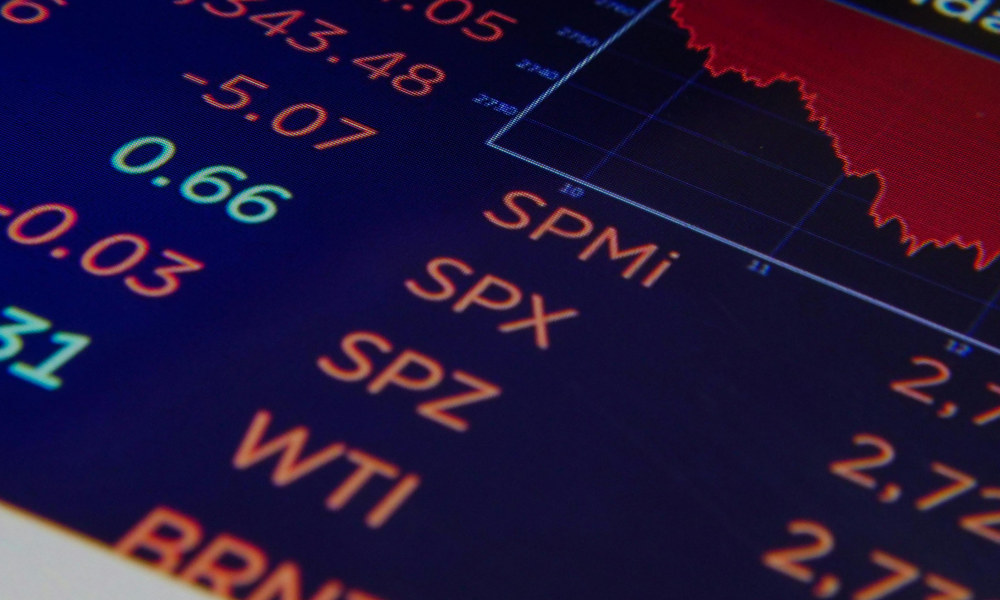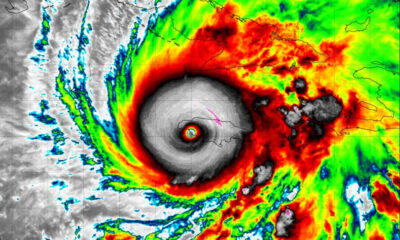Business
Markets tumble as U.S.–China trade tensions escalate over new tariffs

U.S. markets tumbled on Tuesday as the economic standoff between Washington and Beijing deepened, with the S&P 500 closing below 5,000 points for the first time in a year.
The selloff came just hours before the U.S. tariff rate on Chinese imports is set to more than double, reaching a staggering 104% at 12:01 a.m. ET Wednesday.
The S&P 500 fell 79.48 points, or 1.57%, to close at 4,982.77. The Nasdaq posted the steepest losses, dropping 335.35 points, or 2.15%, to 15,267.91, while the Dow Jones Industrial Average declined 320.01 points, or 0.84%, to 37,645.59.
Market volatility intensified after the White House confirmed that President Donald Trump’s threatened tariff hike on Chinese goods would go into effect as planned. The move raises China’s total tariff rate from 54% to 104%, a figure that includes the country-specific 34% announced by Trump last week and a new 50% penalty added in response to Beijing’s retaliatory tariffs.
On Monday, Trump warned that China had until “12 o’clock” Tuesday to lift its 34% retaliatory duties on U.S. exports or face a steep escalation in trade penalties. China refused, and in a statement the Ministry of Commerce condemned the U.S. actions and warned of strong countermeasures.
“If the United States implements the tariff escalation measures, China will resolutely take countermeasures to safeguard its own rights and interests,” the ministry said, calling the U.S. tariffs “groundless” and “a typical unilateral bullying practice.” The statement described the escalation as “a mistake on top of a mistake” and warned that if the U.S. continues on its path, “China will fight to the end.”
Beijing urged Washington to cancel all unilateral tariffs, stop suppressing China’s economy, and resolve differences “through equal dialogue on the basis of mutual respect.” It also reiterated that there are “no winners in a trade war and there is no way out for protectionism.”
The tariff increase comes amid Trump’s broader trade overhaul, which began on April 2 with the announcement of sweeping reciprocal tariffs on more than 180 countries and territories. Baseline import duties of 10%, with elevated, country-specific rates — including the now 104% on China — are set to roll out at midnight.
The impact on global markets has been immediate. Wall Street has experienced its sharpest decline since the early stages of the COVID-19 pandemic, driven largely by fears of an escalating trade war and its potential to slow global economic growth.
Economists warn that the increased tariffs could strain supply chains, inflate consumer prices, and hamper both U.S. manufacturing and export sectors. Many investors are also bracing for retaliatory moves from China and other major trading partners.
Trump has defended the tariffs as essential to correcting what he describes as decades of exploitative trade practices by foreign governments. “This isn’t about punishment — it’s about fairness,” Trump said last week. “April 2 will be remembered as the day America reclaimed its economic independence.”

-

 World2 days ago
World2 days agoEthiopian volcano erupts for first time in thousands of years
-

 Legal1 week ago
Legal1 week agoMichigan man JD Vance sentenced to 2 years for threatening Trump and JD Vance
-

 Politics1 week ago
Politics1 week agoU.S. to designate Maduro-linked Cartel de los Soles as terrorist organization
-

 Health1 week ago
Health1 week agoCambodia reports fatal H5N1 bird flu case in 22-year-old man
-

 Legal6 days ago
Legal6 days agoWoman in critical condition after being set on fire on Chicago train
-

 World6 days ago
World6 days agoHurricane Melissa registered 252 mph wind gust, breaking global record
-

 Politics1 week ago
Politics1 week agoEpstein survivors release PSA calling on Congress to release all files
-

 Legal5 days ago
Legal5 days agoSuspect in San Diego stabbing shot by authorities after fleeing into Mexico




